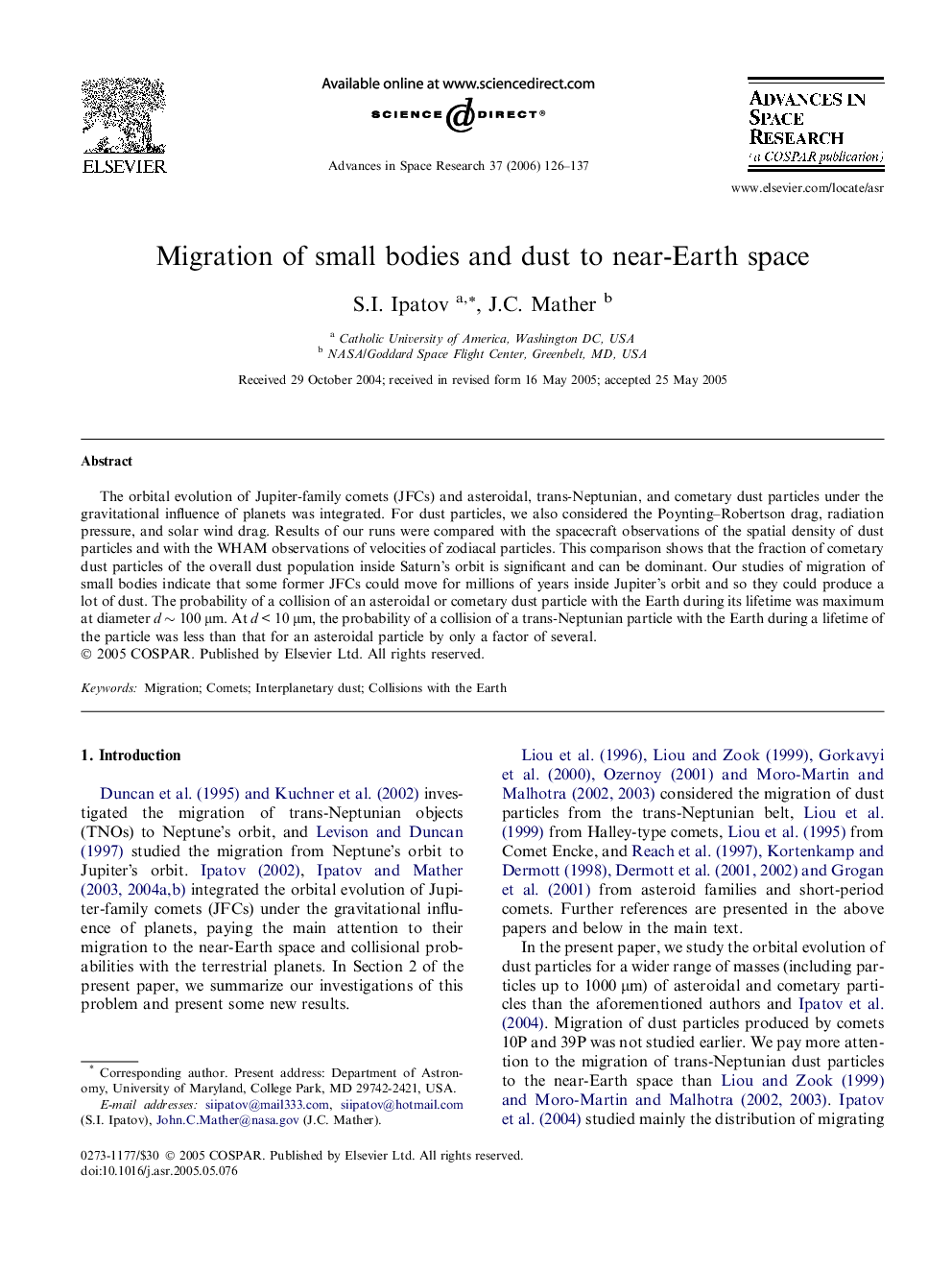| Article ID | Journal | Published Year | Pages | File Type |
|---|---|---|---|---|
| 1767522 | Advances in Space Research | 2006 | 12 Pages |
The orbital evolution of Jupiter-family comets (JFCs) and asteroidal, trans-Neptunian, and cometary dust particles under the gravitational influence of planets was integrated. For dust particles, we also considered the Poynting–Robertson drag, radiation pressure, and solar wind drag. Results of our runs were compared with the spacecraft observations of the spatial density of dust particles and with the WHAM observations of velocities of zodiacal particles. This comparison shows that the fraction of cometary dust particles of the overall dust population inside Saturn’s orbit is significant and can be dominant. Our studies of migration of small bodies indicate that some former JFCs could move for millions of years inside Jupiter’s orbit and so they could produce a lot of dust. The probability of a collision of an asteroidal or cometary dust particle with the Earth during its lifetime was maximum at diameter d ∼ 100 μm. At d < 10 μm, the probability of a collision of a trans-Neptunian particle with the Earth during a lifetime of the particle was less than that for an asteroidal particle by only a factor of several.
